Nanook of the North (also known as Nanook of the North: A Story Of Life and Love In the Actual Arctic) is a 1922 American silent documentary film by Robert J. Flaherty, with elements of docudrama, at a time when the concept of separating films into documentary and drama did not yet exist.
| Nanook of the North | |
|---|---|
| Directed by | Robert J. Flaherty |
| Produced by | Robert J. Flaherty |
| Written by | Robert J. Flaherty |
| Starring | Allakariallak Nyla Cunayou |
| Cinematography | Robert J. Flaherty |
| Edited by | Robert J. Flaherty Charles Gelb |
| Distributed by | Pathé Exchange |
Release date |
|
Running time | 79 minutes |
| Country | United States |
| Language | Silent film English intertitles |
| Budget | $53,000 |
In the tradition of what would later be called salvage ethnography, Flaherty captured the struggles of the Inuk man named Nanook and his family in the Canadian Arctic. The film has been incorrectly considered the first feature-length documentary. Some have criticized Flaherty for staging several sequences, but the film is generally viewed as standing "alone in its stark regard for the courage and ingenuity of its heroes."
In 1989, Nanook of the North was one of the first 25 films to be selected for preservation in the United States National Film Registry by the Library of Congress as being "culturally, historically, or aesthetically significant".
Screenplay
The documentary follows the lives of an Inuk, Nanook, and his family as they travel, search for food, and trade in the Ungava Peninsula of northern Quebec, Canada. Nanook; his wife, Nyla; and their family are introduced as fearless heroes who endure rigors no other race could survive. The audience sees Nanook, often with his family, hunt a walrus, build an igloo, go about his day, and perform other tasks.
Development
In 1910 Flaherty was hired as an explorer and prospector along the Hudson Bay for the Canadian Pacific Railway. Learning about the lands and people there, Flaherty decided to bring a camera with him on his third expedition in 1913, but knowing nothing about film, Flaherty took a three-week course on cinematography in Rochester, New York
Filming
Using a Bell & Howell camera, a portable developing and printing machine, and some lighting equipment, Flaherty spent 1914 and 1915 shooting hours of film of Inuit life. By 1916, Flaherty had enough footage that he began test screenings and was met with wide enthusiasm. However, in 1916, Flaherty dropped a cigarette onto the original camera negative (which was highly flammable nitrate stock) and lost 30,000 feet of film. With his first attempt ruined, Flaherty decided to not only return for new footage, but also to refocus the film on one Inuit family as he felt his earlier footage was too much of travelogue. Spending four years raising money, Flaherty was eventually funded by French fur company Revillon Frères and returned to the North and shot from August 1920 to August 1921. As a main character, Flaherty chose the celebrated hunter of the Itivimuit tribe, Allakariallak. The full collaboration of the Inuit was key to Flaherty's success as the Inuit were his film crew and many of them knew his camera better than he did.
Flaherty has been criticized for deceptively portraying staged events as reality. "Nanook" was in fact named Allakariallak (pronounced ), while the "wife" shown in the film was not really his wife. According to Charlie Nayoumealuk, who was interviewed in Nanook Revisited (1990), "the two women in Nanook - Nyla (Alice Nuvalinga) and Cunayou (whose real name we do not know) were not Allakariallak's wives, but were in fact common-law wives of Flaherty." And although Allakariallak normally used a gun when hunting, Flaherty encouraged him to hunt after the fashion of his recent ancestors in order to capture the way the Inuit lived before European influence. On the other hand, while Flaherty made his Inuit actors use spears instead of guns during the walrus and seal hunts, the prey shown in the film were genuine, wild animals. Flaherty also exaggerated the peril to Inuit hunters with his claim, often repeated, that Allakariallak had died of starvation two years after the film was completed, whereas in fact he died at home, likely of tuberculosis.
Building of the igloo
The building of the igloo is one of the most celebrated sequences in the film, but interior photography presented a problem. Building an igloo large enough for a camera to enter resulted in the dome collapsing, and when they finally succeeded in making the igloo it was too dark for photography. Instead, the images of the inside of the igloo in the film were actually shot in a special three-walled igloo for Flaherty's bulky camera so that there would be enough light for it to capture interior shots.
Visit to the trade post of the white man
In the "Trade Post of the White Man" scene, Nanook and his family arrive in a kayak at the trading post and one family member after another emerge from a small kayak, akin to a clown car at the circus. Going to trade his hunt from the year, including the skins of foxes, seals, and polar bears, Nanook comes in contact with the white man and there is a funny interaction as the two cultures meet. The trader plays music on a gramophone and tries to explain how a man 'cans' his voice. Bending forward and staring at the machine, Nanook puts his ear closer as the trader cranks the mechanism again. The trader removes the record and hands it to Nanook who at first peers at it and then puts it in his mouth and bites it. The scene is meant to be a comical one as the audience laughs at the naivete of Nanook and people isolated from Western culture. In truth, the scene was entirely scripted and Allakariallak knew what a gramophone was.
Hunting of the walrus
It has been noted that in the 1920s when Nanook was filmed, the Inuit had already begun integrating the use of Western clothing and were using rifles to hunt rather than harpoons, but this does not negate that the Inuit knew how to make traditional clothing from animals found in their environment, could still fashion traditional weapons and were perfectly able to make use of them if found to be preferable for a given situation.
The film is not technically sophisticated; how could it be, with one camera, no lights, freezing cold, and everyone equally at the mercy of nature? But it has an authenticity that prevails over any complaints that some of the sequences were staged. If you stage a walrus hunt, it still involves hunting a walrus, and the walrus hasn't seen the script. What shines through is the humanity and optimism of the Inuit.
—?Roger Ebert
Flaherty defended his work by stating, "one often has to distort a thing in order to catch its true spirit." Later filmmakers have pointed out that the only cameras available to Flaherty at the time were both large and immobile, making it impossible to effectively capture most interior shots or unstructured exterior scenes without significantly modifying the environment and subject action.
As the first "nonfiction" work of its scale, Nanook of the North was ground-breaking cinema. It captured many authentic details of a culture little-known to outsiders, and was filmed in a remote location. Hailed almost unanimously by critics, the film was a box office success in the United States and abroad. In the following years, many others would try to follow in Flaherty's success with "primitive peoples" films. In 2005 film critic Roger Ebert described the film's central figure, Nanook, as "one of the most vital and unforgettable human beings ever recorded on film." In a 2014 Sight and Sound poll, film critics voted Nanook of the North the seventh best documentary film of all time.
At the time, few documentaries had been filmed and there was little precedent to guide Flaherty's work. Since Flaherty's time, staging, attempting to steer documentary action, or presenting re-enactment as naturally captured footage has come to be considered unethical.
In its earliest years (approx. 1895–1902), film production was dominated by actualities—short pictures of real people in real places. Robert Flaherty’s great innovation was simply to combine the two forms of actuality, infusing the exotic journey with the details of indigenous work and play and life.
In 1999, Nanook of the North was digitally remastered and released on DVD by The Criterion Collection. It includes an interview with Flaherty's widow (and Nanook of the North co-editor), Frances Flaherty, photos from Flaherty's trip to the arctic, and excerpts from a TV documentary, Flaherty and Film. In 2013, Flicker Alley released a remastered Blu-ray version that includes six other arctic films.

Subhayathra Full HD Movie Download

Thodi Life Thoda Magic Full HD Movie Download
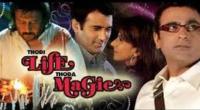
Navagraha Full HD Movie Download
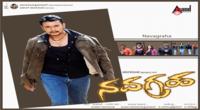
Shradhanjali Full HD Movie Download
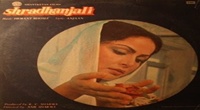
Badla Full HD Movie Download
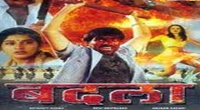
Do Fantoosh (1994) Full HD Movie Download
.jpg)
Manorama Six Feet Under Full HD Movie Download
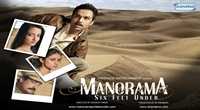
Apne Hue Paraye Full HD Movie Download
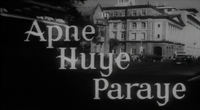
Iqbal Full HD Movie Download

Dabangg Full HD Movie Download

Balwaan (2009) Full HD Movie Download
.jpg)
Sleepy Hollow Full HD Movie Download

Nadiya Ke Par Full HD Movie Download
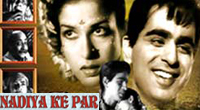
One Man Army-Gulami Full HD Movie Download

Aaj Ka Naya Kamina Full HD Movie Download

Nelavanka Full HD Movie Download

Iddaruammayilu Full HD Movie Download
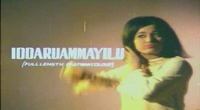
Anuraag Full HD Movie Download

Dhoom Full HD Movie Download

Ishaqzaade (2012) Full HD Movie Download
.jpg)
Download latest Movie from bollywood
- 1> baaghi 3
- 2> THE SKY IS PINK MOVIE FULL STORY AND REVIEW
- 3> Luka Chuppi
- 4> TO ALL THE BOYS I’VE LOVED BEFORE
- 5> Kabir Singh
- 6> Street Dancer 3D
- 7> Simmba
- 8> Gone Girl
- 9> The Girl Who Lived
- 10> Ludo
- 11> DILWALE DULHANIA LE JAYENGE
- 12> GUILTY
- 13> The Godfather
- 14> Adventures of Rusty
- 15> Sooryavanshi
- 16> Satyameva Jayate 2
- 17> Thappad
- 18> Bhool Bhulaiyaa 2
- 19> KGFChapter 2
- 20> Mardaani 2
- 21> Pinjar
- 22> Shivaji maharaj
- 23> Ek Villian 2
- 24> Hungama 2
- 25> Divergent
- 26> Mumbai Saga
- 27> The Internship
- 28> HIT (telugu)
- 29> Panga
- 30> The perfect date
- 31> 16 December
- 32> Gopala Gopala (Telugu)
- 33> Brahmastra
- 34> Gangubai Kathiawadi
- 35> Manmadhudu
- 36> Nenu local
- 37> Mahanati
- 38> Shatamanam bavathi
- 39> Lagaan
- 40> After
- 41> MOM
- 42> Shamshera
- 43> Raguvaran BTech
- 44> Khakee
- 45> The villain
- 46> OM
- 47> Mr. perfect
- 48> Bueatifull mind
- 49> Hichki
- 50> Gabbar Singh
- 51> Jogi
- 52> Before Sunrise
- 53> Before Sunset
- 54> Before Midnight
- 55> The Big Bull
- 56> Top Gun: Maverick
- 57> The Purge
- 58> The Sky is Pink
- 59> Laxmmi Bomb
- 60> Sadak 2
- 61> Sufna
- 62> Prithviraj
- 63> PK
- 64> Coolie No 1(2020)
- 65> Black Widow
- 66> Dear Zindagi
- 67> Dil Bechara
- 68> PHIR HERA PHERI
- 69> WAR
- 70> Dostana
- 71> RRR: Roudram Ranam Rudhiram
- 72> Maidan
- 73> Dabbang 3
- 74> Chhalaang
- 75> life as we know it
- 76> SherShaah
- 77> Sandeep Aur Pinky Faraar
- 78> Event Horizon
- 79> 83
- 80> Radhe: Your Most Wanted Bhai
- 81> Gunjan Saxena: The Kargil Girl
- 82> Mr India
- 83> Vivah
- 84> Anokha Bandhan
- 85> Ghost
- 86> Bhoot: Part One - The Haunted Ship
- 87> Haseen Dilruba
- 88> Laal Singh Chaddha
- 89> Qismat
- 90> Rajput
- 91> Drive
- 92> Dil Chahta Hai
- 93> Dil Ki Baazi
- 94> Dil Ka Rishta
- 95> Teesri Manzil
- 96> Dil
- 97> Love Aaj Kal
- 98> Khaali Peeli
- 99> Bunty Aur Babli 2
- 100> Atrangi Re
- 101> Gulabo Sitabo
- 102> Jodi
- 103> Suraj Pe Mangal Bhari
- 104> Deewana
- 105> Attack
- 106> Sardar Udham Singh
- 107> Toofan
- 108> THE LOVEBIRDS
- 109> Jersey
- 110> Ginny Weds Sunny
- 111> Thalaivi
- 112> Shiddat
- 113> Angels vs Zombies
- 114> Koi Mil Gya
- 115> Thank God
- 116> Bhuj: The Pride of India
- 117> Hum Aapke Hain Kaun
- 118> The Platform
- 119> Bird Box
- 120> Roohi Afzana
- 121> Torbaaz
- 122> Nikamma
- 123> World War Z
- 124> Extraction
- 125> Train to Busan
- 126> Life of Pi
- 127> SHAADI MEIN JROOR AANA
- 128> Himmat Aur Mehnat
- 129> To All The Boys: P.S. I Still Love You
- 130> Mimi
- 131> Good Newwz
- 132> Shubh Mangal Zyada Saavdhan
- 133> Raabta
- 134> Harry Potter and the Philosopher's Stone
- 135> Harry Potter and the Chamber of Secrets
- 136> Chhapaak
- 137> War of the Worlds
- 138> Harry Potter and the Prisoner of Azkaban
- 139> Harry Potter and the Goblet of Fire
- 140> MURDER MYSTERY
- 141> Shakuntala Devi
- 142> Bachchan Pandey
- 143> Jayeshbhai Jordar
- 144> Sheer Qorma
- 145> Saina
- 146> 'O' Pushpa I hate tears
- 147> Kedarnath
- 148> MS Dhoni The Untold Story
- 149> Chhichhore
- 150> Badhaai Ho
- 151> Unstoppable
- 152> Oz the Great And Powerful
- 153> The Girl on the Train
- 154> Haathi Mere Saathi 2020
- 155> The Conjuring: The Devil Made Me Do It
- 156> Gandhi Se Pehle Gandhi
- 157> The Song of Scorpions
- 158> Srimanthudu
- 159> Hello Guru Prema Kosame
- 160> Beauty and The Beast
- 161> Black Panther
- 162> Charlie and the Chocolate Factory
- 163> Bole Chudiyan
- 164> Fidaa
- 165> Duvvada Jagannadham
- 166> Bruce Lee: The Fighter
- 167> Hyper
- 168> Yaara
- 169> Red (2020)
- 170> Shivam
- 171> That Is Mahalakshmi
- 172> Nishabdham
- 173> Aashram 2020 web series
- 174> Laxmii
- 175> Mismatched
- 176> STUDENT OF THE YEAR 2
- 177> NAIL POLISH
- 178> Ramprasad Ki Tehrvi
- 179> KAAGAZ
- 180> 12 o Clock
- 181> The Power
- 182> bolo hau
- 183> Tribhanga
- 184> JAMUN
- 185> Madam Chief Minister
- 186> Maasaab
- 187> Aadhaar
- 188> Tanhaji
- 189> Bhaagi 3
- 190> Bhootnath
- 191> MALANG
- 192> Jai Mummy Di
- 193> Haathi Mere Saathi 2021
- 194> Shakeela
- 195> Unpaused
- 196> Annayya
- 197> Vamsoddharakudu
- 198> Mrugaraju
- 199> Narasimha Naidu
- 200> Sankranti
- 201> Manasu Maata Vinadhu
- 202> Anjaane
- 203> Apaharan
- 204> Bachke Rehna Re Baba
- 205> Bewafaa
- 206> Roohi
- 207> Radhe
- 208> Zindagi Khoobsoorat Hai
- 209> Yeh Mohabbat Hai
- 210> Yeh Kya Ho Raha Hai?
- 211> The Tomorrow War
- 212> DehradunDiary
- 213> Meri Shaadi Karaoo
- 214> Matruu Ki Bijlee Ka Mandola
- 215> No One Killed Jesica
- 216> Aag Ka Goola
- 217> Eight Million Dollars
- 218> Three Hundred
- 219> Cats and Dog
- 220> Decoy
- 221> Gold Rush
- 222> You Have Got Mail
- 223> Final Destination three
- 224> Tofan
- 225> Jungle
Request for Download movie Nanook Of The North
- Bollywood movies
- Latest Bollywood movies
- Download all bengali movies
- Download all bhojpuri movies
- Download all english movies
- Download all gujarati movies
- Download all hindi movies
- Download all kannada movies
- Download all malayalam movies
- Download all marathi movies
- Download all oriya movies
- Download all punjabi movies
- Download all tamil movies
- Download all telugu movies
- Bollywood action movies
- Bollywood adventure movies
- Bollywood animation movies
- Bollywood classical movies
- Bollywood comedy movies
- Bollywood crime movies
- Bollywood devotional movies
- Bollywood documentary movies
- Bollywood drama movies
- Bollywood family movies
- Bollywood fantasy movies
- Bollywood historical movies
- Bollywood history movies
- Bollywood horror movies
- Bollywood musical movies
- Bollywood mystery movies
- Bollywood mythological movies
- Bollywood patriotic movies
- Bollywood romance movies
- Bollywood romantic movies
- Bollywood sci-fi movies
- Bollywood social movies
- Bollywood spiritual movies
- Bollywood sports movies
- Bollywood suspense movies
- Bollywood thriller movies
- Bollywood war movies
- Hot actress list
- Hot gujarati actress list
- Hot tamil actress list
- Hot bhojpuri actress list
- Hot assam actress list
- Hot bihari actress list
- Hot jammu and kashmir actress list
- Hot gujarati actress list
- Hot haryana actress list
- Hot konkani actress list
- Hot marathi actress list
- Hot odia actress list
- Hot punjabi actress list
- Hot rajasthani actress list
- Hot kannada actress list
- Hot malayalam actress list
- Hot telugu actress list
- Hot tulu actress list
- Hot Actress list from Indian city
- Hot actress list from ahmedabad
- Hot actress list from alappuzha
- Hot actress list from bangalore
- Hot actress list from bangalore
- Hot actress list from bhopal
- Hot actress list from chandigarh
- Hot actress list from chennai
- Hot actress list from guwahati
- Hot actress list from hyderabad, india
- Hot actress list from indore
- Hot actress list from jaipur
- Hot actress list from kannur
- Hot actress list from kochi
- Hot actress list from kolkata
- Hot actress list from kollam
- Hot actress list from kottayam
- Hot actress list from kozhikode
- Hot actress list from lucknow
- Hot actress list from madurai
- Hot actress list from mangalore
- Hot actress list from mumbai
- Hot actress list from mysore
- Hot actress list from new delhi
- Hot actress list from patna
- Hot actress list from pune
- Hot actress list from thiruvananthapuram
- Hot actress list from thrissur
- Hot actress list from tiruchirappalli
- Hot actress list from vijayawada
- Hot actress list from visakhapatnam
- All Bollywood Movies
- Bollywood Celeb
- >Art Director
- >Audiography
- >Background Music
- >Banner
- >Choreographer
- >Cinematographer
- >Costume Designer
- >Dialogue Writer
- >Director
- >Distributor
- >Editor
- >Executive Producer
- >Hair Stylist
- >Lyricist
- >Music Director
- >Photographer
- >Playback Singers
- >Presenter
- >Producer
- >Production Company
- >Production Designer
- >Screenplay
- >Singer
- >Sound
- >Actor
- >Story Writer
- >Studio
- >Video Director
- >Miscellaneous
- >Publicity (pro)
- >Web Creator
- >Production Labs
- >Publicity Design
- >Publicity Stills
- >Writer
- >Miscellaneous Artists
- >Visual Effects
- >Reporter
- >Music Company
- >Shooting Studios
- >Picturised On
- >Line Producer
- >Co Producer
- >Asst Director
- >Casting Director
- >Cinematography
- >Choreography
- >Dialouge
- >Editing
- >Lyrics
- >Music
- >Story
- >Playback Singer Female
- >Playback Singer Male
- >Actor In A Comic Role (male/female)
- >Child Artiste
- >Ensemble Cast
- >Actor Popular Choice (male)
- >Actor Popular Choice (female)
- >Sa Re Ga Ma Pa Song Of The Year
- >Actor In Supporting Role
- >Actress In Supporting Role
- >Actor In Leading Role
- >Art Direction
- >Actress In Leading Role
- >Sound Recording
- >Costume Design
- >Special Effects
- >Action
- >Actor In A Negative Role
- >Lifetime Achievement Award
- >Cinematic Exellence (director)
- >Cinematic Exellence (male)
- >Cinematic Exellence (female)
- >International Male Icon
- >International Female Icon
- >Actor In A Supporting Role (male)
- >Actor In A Supporting Role (female)
- >Actor In A Comic Role
- >Playback Singer (male)
- >Playback Singer (female)
- >Most Promising Debut (female)
- >Most Promising Debut (male)
- >Most Promising Director
- >Sound Design
- >Lifetime Jodi
- >Marketed Film
- >Jury Award For Best Actor
- >Jury Award For Best Actress
- >Jury Award For Best Film
- >Jury Award For Best Director
- >Playback Singer(male)
- >Lifetime Acheivement Award (male)
- >Excellence Award
- >Jodi Award
- >Performer Of The Year
- >Presented By
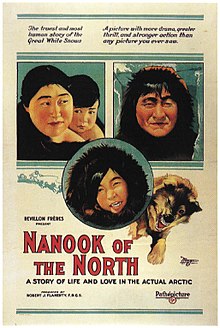 Story of movie Nanook Of The North :
Story of movie Nanook Of The North : 